Placement
Advocacy Strategies
Why We advocate
Research has shown that children need consistency, predictability and attachment to a caring adult for healthy development. For young people in foster care, this is especially important due to the trauma(s) they have experienced prior to and including being removed from their home of origin and community.
Unfortunately, placement instability is very common for children in the foster care system. Experiencing multiple placements negatively impact a youth’s safety, permanency, and well-being. When a child is maltreated in a resource home and must be moved, safety is impacted; when a child experiences multiple placements, permanency is delayed; well-being is affected in multiple ways including poorer educational outcomes as a result of changing schools, and increased behavioral and mental health issues. Experiencing multiple placement changes also increases a young person’s vulnerability to being groomed and sexually exploited.
Children’s behavioral challenges are often cited among the main reasons for placement disruption. Children in care have generally experienced trauma before the initial removal, and then they experience subsequent traumas as a result of being separated from their families. Even children without externalizing behavioral problems in their first placement are likely to develop behavioral challenges if they are moved, given the additional trauma that accompanies increased numbers of placements. One study, which controlled for children’s behaviors at entry into foster care, found that children with multiple placements had between 36 and 63 percent greater risk of developing behavioral challenges than did children in stable placements.
-Strong Families Policy Brief, Casey Family Programs
How to advocate
Placements for foster youth are relationship-based. As we work to support a placement, we are focusing on the relationships between the youth and the family of origin, the resource family, congregate care facility staff, and extended family caregivers.
A key aspect of the CASA role is asking powerful questions to the PSW, PO, youth’s attorney, and other members of the youth’s care team. Below are examples of placement-related questions that can help team members to be thoughtful and proactive about placement issues:
- When was the last time family-finding was done? What were the results? Can family-finding be initiated again?
- How is communication about the placement relationship going with the care team?
- Are caregivers aware they can file a JV-290 to share observations and recommendations with the court? Have they been encouraged to do so by the care team?
- Does the team celebrate placement successes (connection and stability)?
- Do the youth and caregiver understand the relationship expectations?
- How can trust be (re)built between the youth and the caregiver?
- What has contributed to any challenges or instability?
- Does the youth have contact with their family/community of origin?
- How can those relationships be supported and maintained?
- What kind of support do the caregivers need?
- What is the permanent plan for the youth? Is the case headed towards reunification, guardianship or adoption?
- If this placement relationship doesn’t work out, what are the next steps?
- What is the concurrent permanency plan for the youth?
When you learn that the youth you serve will be moved to a new placement , these questions with the PSW and team can be useful to inform planning:
- What does the youth have to say about a future placement? What are their wishes and desires?
- What characteristics of caregiver behavior or placement will be best for this youth?
- How can we assure future visits with family / siblings / natural supports?
- What ideas do you have for helping the youth and new caregivers to build trust?
- Who is responsible for transporting the youth and their belongings to the new placement (do they have suitcases/duffels/luggage of their own)?
- How can we minimize disruption of relationships / school / care for the youth?
- Who will ensure any enrollment change?
- Who will ensure continuity of mental and physical healthcare, family and community relationships, extra curricular activities…etc.?
- Can the youth’s family, extended family, or natural supports be involved? or asked to be the new placement/relationship?
- If the youth is being moved to a STRTP, is the CASA familiar with JV-236 in which they may share their approval or opposition to the move?
- For Non Minor Dependents, who will not have a “caregiver” as part of the placement, are they aware of their rights and resources available to them?
As a CASA, consider these questions as a way to inform your advocacy:
- Have you built trusting and collaborative relationships with members of the child and family team?
- How can you have a supportive and active role on the team?
- How can you support the relationship between the youth and the resource family? Between the youth and their family of origin (including extended family)?
Appropriate language
The term “placement” makes explicit that the child is not living at home with their family of origin. However, it should not be used in the youth’s presence to avoid adding to their sense of not being “at home”. Instead you can use terms like, “where you are living now”, “your home with your foster family (or caregivers)”. Children may not know what “placement” means, but are keenly aware that it does not mean home.
Resources/links to learn more
Strong Families Policy Statement
Family Urgent Response System (FURS): a free 24/7/365 hotline for current or former foster youth and your caregivers to call and get immediate help for any big or small issues you may be having. 24/7 Hotline (call or text): 833-939-3877
Seneca Mobile Response Team Flyer
California Youth Connections: Housing Stability for all - Findings and Recommendations
Homeless Youth Handbook: Turning 18, 21 and Leaving Foster Care
NYT Op-Ed: I Will Never Forget That I Could Have Lived With People Who Loved Me
Continuing Education
None at this time
